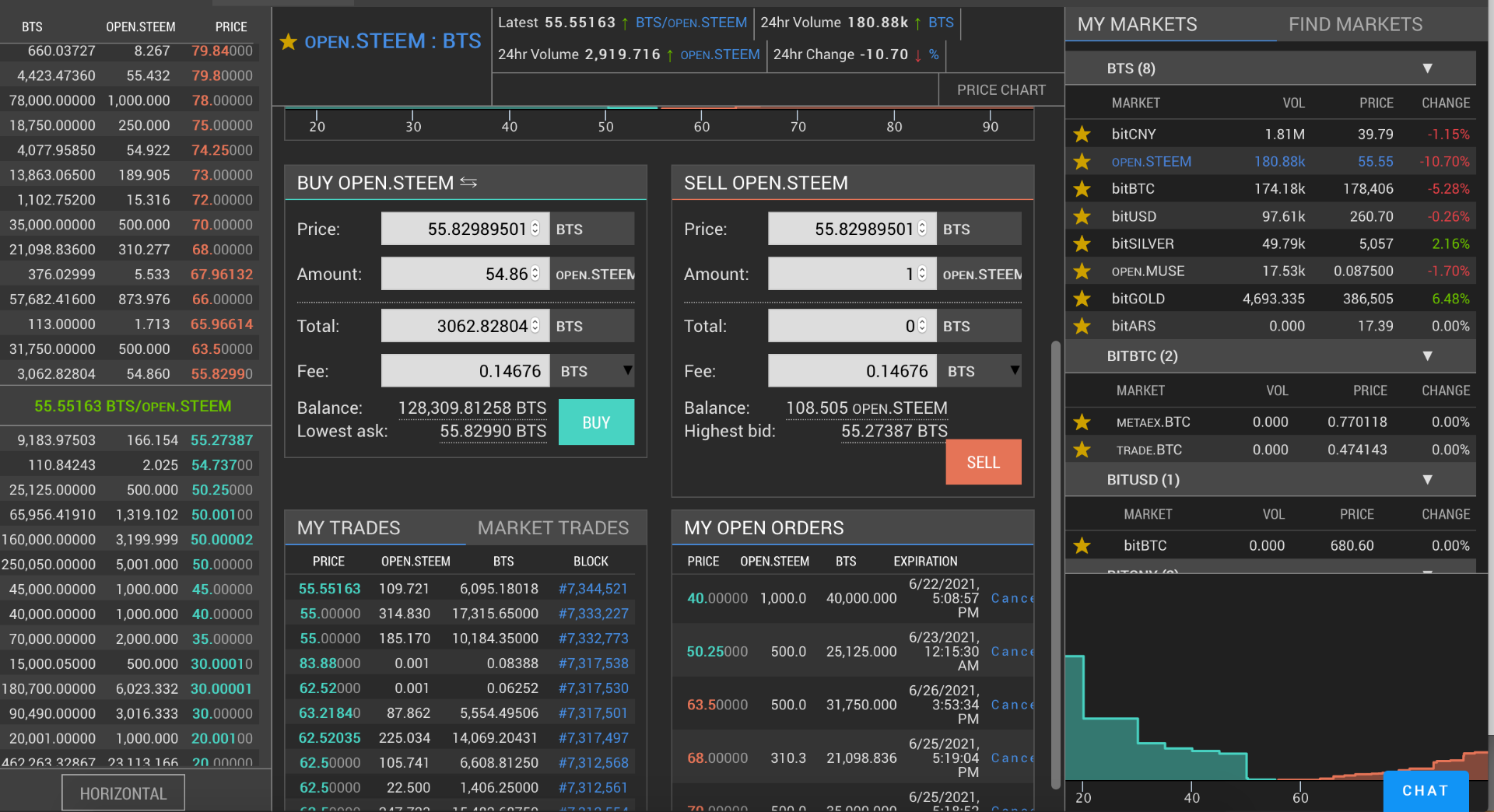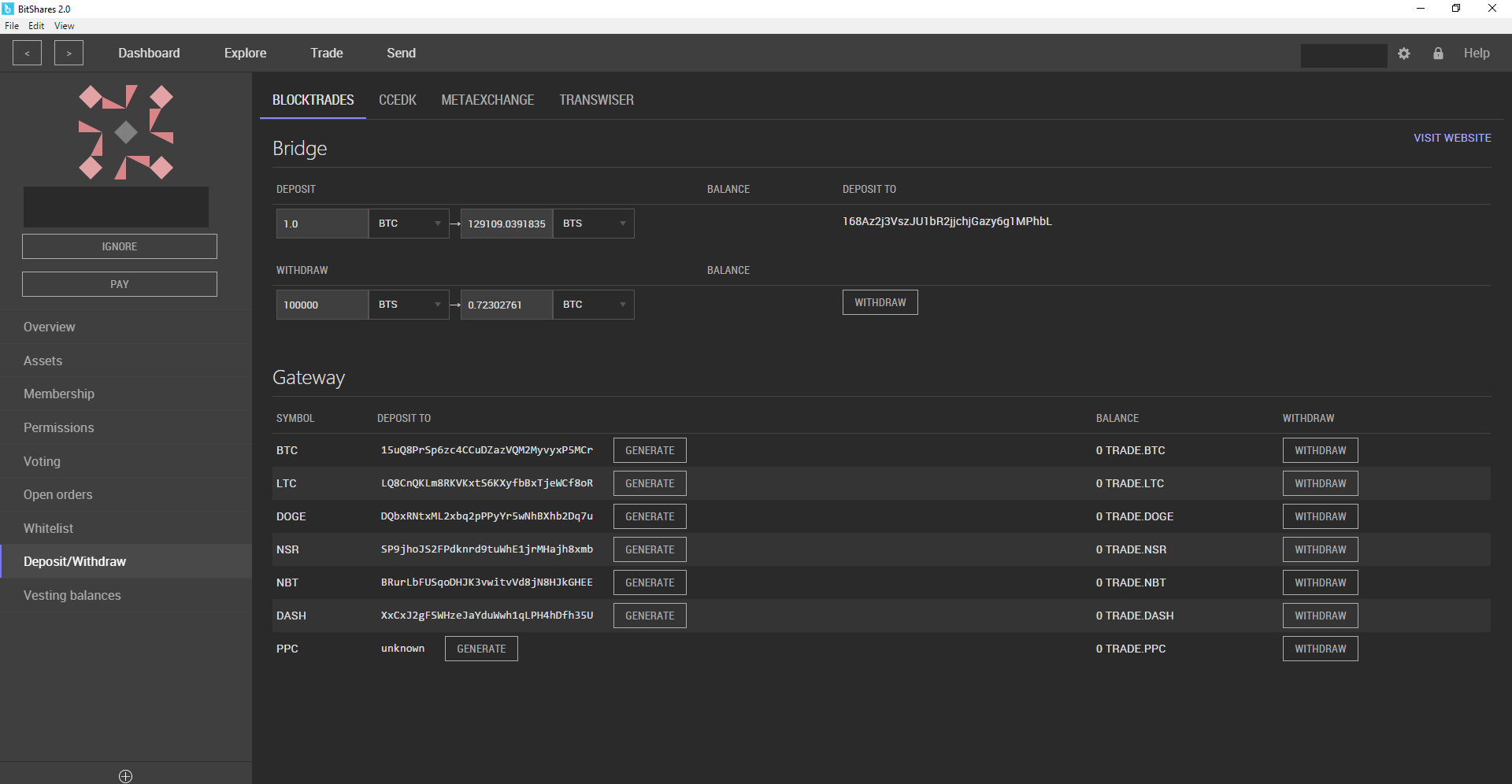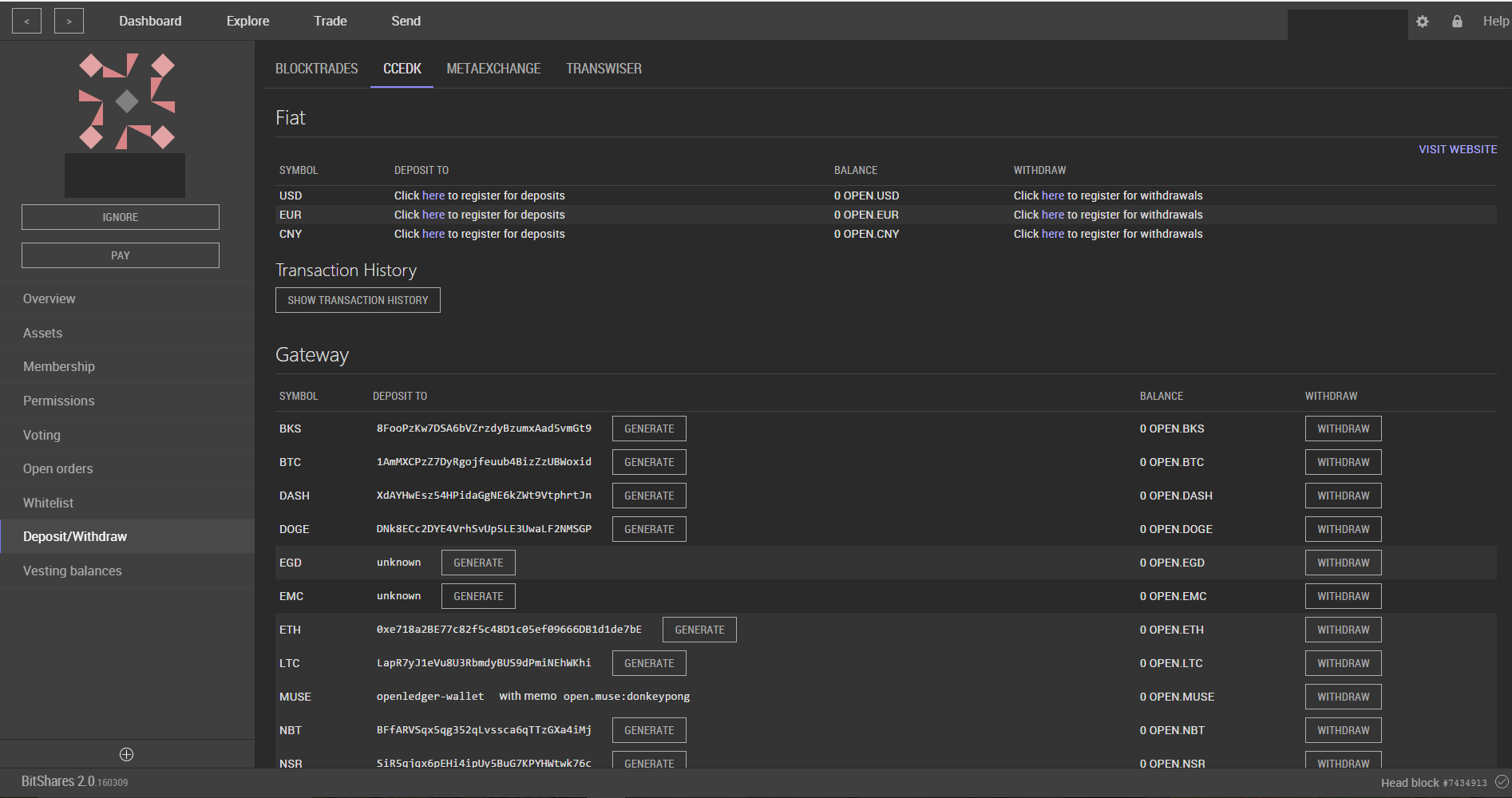
This article is Part 1 of a two-part series. Next, please see Part 2 of this guide, written by @infovore . It is entitled: “Ready to Power Up or Cash Out? Part 2: Your July 4 Guide to Using Blocktrades and Bittrex” Link: @infovore/ready-to-power-up-or-cash-out-part-2-your-july-4-guide-to-using-blocktrades-and-bittrex
Author’s Note: It has been a pleasure to write this article with my friend Mahmud @infovore, who is publishing Part 2. He is a very skilled researcher and an excellent writer in his own right. I hope you enjoy reading his other posts on Steemit. We have a lot of great writers here and I encourage others to collaborate on projects! –Tom @donkeypong
What Can I do with my STEEM or STEEM Dollars?
The best advice for the July 4 payout is to “Power Up” and increase your Steem Power. Powering Up puts your money to work and gives you greater voting influence. An active user with Steem Power, who is voting regularly on good posts, will make some good money while avoiding the worst of dilution. In fact, when you compare Powering Up with cashing out, it’s clear that cashing out carries a steeper cost, at least in terms of the lost opportunity.
However, many people need money. It’s an economic reality that there will be some cashing out in July. Yet there is little to no information on this subject available for new users, many of whom have never even used Bitcoin or cryptocurrencies.
Since the Steemit 101 e-book came out, I have received lots of questions from new users. Surprisingly, one set of questions involves this subject we barely touched on in the book: what to do with that STEEM. In fact, I recently experienced this firsthand after paying someone in STEEM and getting the question: how do I convert this STEEM into money I can spend? After explaining the procedure and then getting the same question from someone else a day later, I realized it was time to sit down and write this simple guide for using STEEM and STEEM Dollars. A lot of people need this information.
Maybe someday, you’ll be able to spend Steem and Steem Dollars at local businesses and online sites. Even now, there may be other options besides these ones we have found. But this is a pretty good snapshot of the STEEM economy so far. Hopefully, the guide will help you understand the available options for what to do with your STEEM and STEEM Dollars after July 4.
STEEM Dollars, the Internal Market, and External Outlets
When you earn a payout through posting or curating, you will be paid half in STEEM Power and half in STEEM Dollars. STEEM Power effectively represents a stake in Steemit; your interest in the system vests and can be cashed out only in weekly payments over two years. STEEM Dollars are a relatively price-stable currency; each one is worth about $1 and is easily convertible.
Steemit’s ecosystem will soon include an internal market where you can convert the price-stable STEEM Dollars into (plain) STEEM, which is the platform’s liquid currency. While the price of STEEM Dollars remains stable, STEEM is a cryptocurrency which is traded on major exchanges. Therefore, its value will fluctuate according to the market price. As a writer and curator, your income is never dependent on the whims of a volatile market, because STEEM Dollars provide you with payment that is more secure and predictable.
The internal market lets you convert STEEM Dollars into STEEM so that you can use or sell your currency more easily. Once you have STEEM, you can either vest it by Powering Up into STEEM Power or you can use or sell it. “How to use or sell it” is really the subject of this guide, so we will cover each possibility in turn.
Alternatively, you can bypass the internal market if you can find other direct outlets for your STEEM Dollars (in which case you never need to convert them into plain STEEM). For example, Blocktrades plans to allow direct conversions from STEEM Dollars into BitShares or Bitcoin, which they expect to have running shortly after the July 4 payout. Blocktrades is one of the simplest, most user-friendly ways to convert currencies, and we cover it in Part 2 of this guide. In addition, Bittrex also may list STEEM Dollars on its exchange market, allowing you to sell them there for other currencies. Bittrex (also covered in Part 2) was the first exchange to list STEEM and many community members have used it reliably.
Any of those methods can get you into Bitcoin or another cryptocurrency. You will need a Bitcoin or cryptocurrency wallet, as we explain further below. There are a number of merchants online who accept Bitcoin (and a few who accept other currencies) as payment. But if you want to convert to fiat cash (such as U.S. Dollars, Euros, or Yen), then you will also need to establish an account with one of the gateways, such as Coinbase or CCEDK, which will allow you to transfer Bitcoin into cash and fund a bank account. We will explain these various options for cashing out, but not before we cover the best option for your Steem: buying more STEEM Power!
STEEM Power & Powering Up
After the July 4 payout, and in any payouts thereafter, your first and best choice is to Power Up with as much as you can afford to deposit. To Power Up, you will convert your STEEM Dollars into STEEM using the internal exchange, and then turn that into Steem Power. Steemit’s economy creates new currency every day, and 90% of this currency goes to Steem Power holders, greatly reducing the impacts of dilution.
Steem Power gives you a vesting stake in Steemit. Though all of Steemit’s currencies are merely cryptocurrency tokens, Steem Power can be likened to a savings account, certificate of deposit, or senior voting shares in a corporation. Any amount you ‘Power Up’ into Steem Power is vested, which means that it is held longer term. Like a CD, you cannot cash it out right away, but Steem Power can only be liquidated in 104 equal weekly payments over two years.
Holding Steem Power gives your votes more power, and this allows you to have greater influence over which authors and which posts get paid. You can even vote on your own posts and pay yourself if you wish. More importantly, if you believe that a decentralized social media site on the blockchain that PAYS people to post and vote on good content has great potential, then don’t you want a stake in that growth?
The internal market will launch soon and should have a user-friendly interface. We expect this to be very simple to use; it will let you convert your STEEM Dollars to STEEM. And even now, you can Power Up with just a few clicks of a button. Here is how to Power Up from STEEM.
Steps:
1.) From Steemit, click on your account and select your wallet. Inside your wallet, you will see three currencies that list any balances you have.
2.) Next to your STEEM balance, you will see a drop-down arrow. Click the arrow, select “Power Up” from the drop-down menu. It looks like this:

3.) Doing that will open a pop-up that asks you to enter the amount of STEEM you wish to Power Up. Once you submit, this is done instantly. And your added STEEM Power will be available to give you an immediate boost to your voting power.
Once you Power Up, you will start making more money from voting immediately. As another Steemit user once remarked, STEEM Power is the gift that keeps on giving!
Buying Assets on the BitShares Decentralized Exchange (DEX)
If you do not need to spend your STEEM or STEEM Dollars, but instead want to save them (or speculate with them), then the BitShares Decentralized Exchange (DEX) offers some intriguing possibilities. Most people access the DEX through OpenLedger, which provides a transparent, user-friendly wallet and portal for the DEX. On the DEX, you can trade User Issued Assets, Prediction Market Assets, and Smartcoins that can track the market price of gold, USD, or a well-known stock index.
Before you buy any kind of asset using the DEX, make sure that the market for that asset has sufficient volume and enough Buy and Sell orders to support a fair price. Volume has been an issue with some of the markets there. Assuming there is a robust market, then you can use the DEX to buy a virtual equivalent for USD, Gold, or a stock index like the NASDAQ.
Why would you do this? Maybe you believe that Gold has a shiny future and you want to buy some, but rather than going through the hassle of ordering gold bullion and paying for the shipping, insurance, security, and storage costs, and rather than dealing with the hassles of trading commodities or exchange traded funds, you can simply own an asset which tracks gold’s price.
If you think that the best place to be is in fiat currency such as the USD, you could buy that one (but for that matter, you could have just stayed in STEEM Dollars, which also are pegged at about $1). The main reason to be interested in a market like USD on the DEX is because it offers a way to trade currencies and have the opportunity to profit from their price movements. There is also an asset called TCNY, which tracks the value of the Chinese currency.
Here’s the key: When you convert your STEEM Dollars into BitShares (BTS), which Blocktrades can do for you, then you can invest or trade in any of these blockchain assets without ever having left the world of cryptocurrencies. The other way to think of this is that you have not needed to enter or exit the world’s financial system. No bank or government agency has asked you for your identity or held up your payment because you did not comply with some regulation.
Of course, you eventually may want to convert some of this to real money that you can spend. Unless and until there are more merchants that accept cryptocurrencies in payment, you may need to rely upon a bridge (converts to Bitcoin or another cryptocurrency) or gateway (can convert to fiat currency such as actual U.S. Dollars, Euros, or Yen). The BitShares exchange has several such “off-ramps”. One of these, the MetaExchange, is inactive at this time. The Transwiser offramp allows TCNY holders to convert to RMB via AliPay. Blocktrades again allows conversions from BitShares and some of its assets to other cryptocurrencies (such as Bitcoin, Litecoin, Dash, and Doge).
CCEDK: Your Gateway to Fiat Currencies
CCEDK is a cryptocurrency exchange based in Denmark that also allows conversion to fiat currencies, enabling you to cash out your OpenLedger and BitShares balances into your bank account. (It also is planning a direct debit card from Bitcoin that allows you to spend Dollars or Euros.) CCEDK is run by the same team that created the OpenLedger portal and it uses the highest level of security, complying with all relevant financial and banking laws. Because this is a gateway back into the world financial system, you will need to verify your account information by providing identity and residence documents (passport or national ID card plus a utility or electric bill) and your bank account information if you want to deposit your money there.
To open an account on the BitShares exchange (DEX), most people use OpenLedger, which is available at https://openledger.info. There also is a light client (wallet and exchange interface) which you can download to your computer; you can find it here: https://bitshares.org/download. This video provides a good tutorial on how to get started on OpenLedger:  . Other tutorials and help files can be found on the OpenLedger site above, and most advice also applies to the light client software program.
. Other tutorials and help files can be found on the OpenLedger site above, and most advice also applies to the light client software program.
To fund an account in BitShares, you can use Blocktrades to seamlessly transfer from STEEM or STEEM Dollars into BitShares. Blocktrades is explained in Part 2 of this article, which shows you how to use it. If you wish to convert into BitShares, then simply select BitShares instead of Bitcoin and follow the same directions.
Here is a screenshot from OpenLedger which shows the OPEN.STEEM asset. We are guessing this will have a much higher volume and a more seamless integration with CCEDK’s bridge or gateway in the near future.

Once you have an account on the BitShares exchange (DEX), you can trade with it through OpenLedger or the light client. When you are ready to cash out, you can use one of the bridges or gateways that are listed. Just click on your account name, select “Deposit/Withdraw” from the menu, and then you will see the various options. Blocktrades and CCEDK are the most commonly used options there, and Transwiser can be used to convert TCNY to Chinese RMB currency. MetaExchange is no longer functioning.
Here is a screenshot from the light client that shows you what the Deposit/Withdraw screen looks like once you have selected Blocktrades from the bridges/gateways menu at the top.

And here is a screenshot of the Deposit/Withdraw screen for CCEDK:

Notice that Blocktrades uses assets with “TRADE.xxx” names, while CCEDK uses assets with “OPEN.xxx” names. What do these mean? On the BitShares exchange, people do not trade external currencies like Bitcoin or Ethereum directly. To buy the Bitcoin equivalent asset, you can trade for TRADE.BTC (a Blocktrades asset, which Blocktrades will convert for you to actual BTC) or OPEN.BTC (a CCEDK asset which is backed by and convertible to BTC using CCEDK).
When you are ready to take BTC out of the BitShares ecosystem, you simply have to take your OPEN.BTC to the Blockchain page there and follow the direction to convert it to actual BTC. The same is true for CCEDK. But please note that for Blocktrades, you are not required to begin the transfer with a “TRADE.xxx” asset; Blocktrades can convert directly from BitShares (BTS) currency into Bitcoin and most major cryptocurrencies.
If you have any trouble, you can visit these companies’ websites directly and contact them, but both have been very reliable and have been used by many community members over a long period. The Blocktrades site is https://blocktrades.us. The CCEDK site is https://www.ccedk.com.
For Part 2 of this series, please see “Ready to Power Up or Cash Out? Part 2: Your July 4 Guide to Using Blocktrades and Bittrex” published by @infovore. Link: @infovore/ready-to-power-up-or-cash-out-part-2-your-july-4-guide-to-using-blocktrades-and-bittrex
